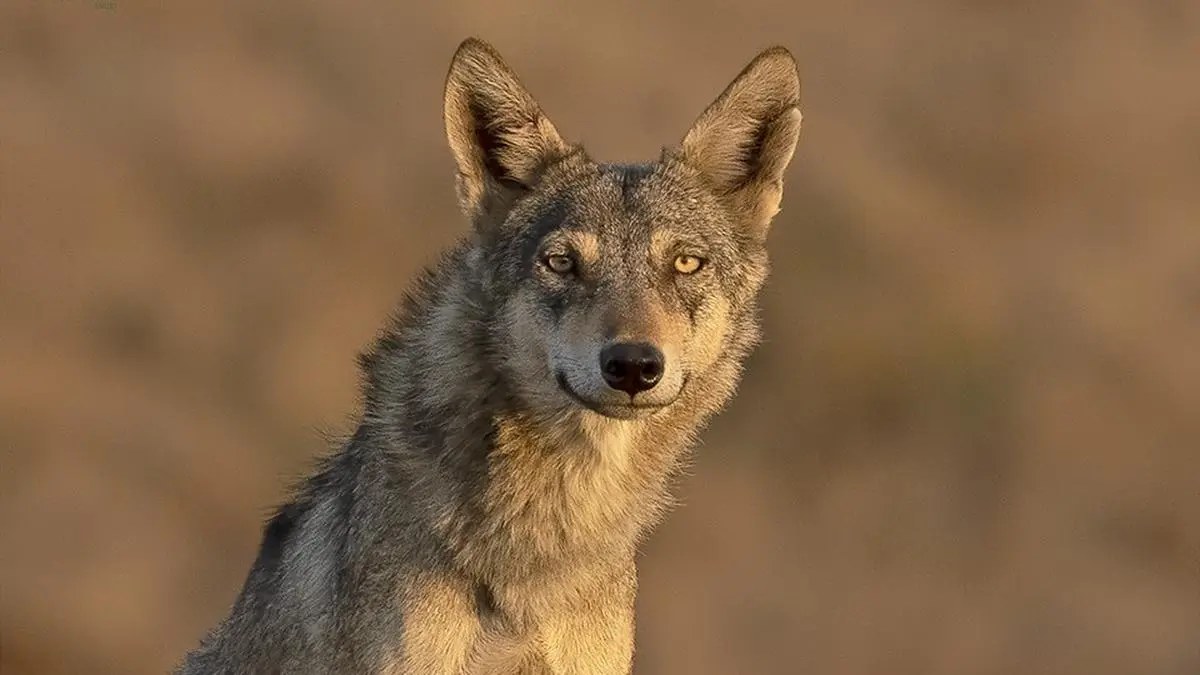The grey wolf is many things to many people in India. For ecologists and conservationists, it is an endangered apex predator that needs to be protected. For historians and anthropologists, iconography associated with wolves usually represents the untameable forces of nature.
For pastoralists and livestock keepers, the wolf is a sworn enemy. For the rest of us, the lore of the big bad wolf is etched into our imagination by tales we read as children. Each of these avatars of the grey wolf confluenced last October in Bahraich, a largely agrarian district in Uttar Pradesh.

Over a span of several weeks, 10 children were killed and at least 25 others injured, in what was believed to be attacks by a pack of wolves. Such attacks by wolves are rare, aberrant even; the last ones took place in Uttar Pradesh in the late 1990s. The Bahraich attacks finally stopped when the State forest department captured some wolves from the region.
Conservationists debated the cause of this strange behaviour of the wolves, an animal that is distinctly shy of humans. But wolf experts in India are almost as scarce as the animal itself. Y.
V. Jhala, one such expert, suggested that this spate of attacks owed to hybridisation: dog-wolf hybrids. 60 million dogs, and counting Dogs, after all, are more used to interacting with humans.
They dwell in human habitations, scavenge for food—and attack (mostly children and the elderly) sometimes fatally. At over 60 million, India has the highest number of free-ranging dogs in the world. A shepherd in Pen Wada grassland, Maharashtra.
Livestock constitutes over 80 per cent of the wolf’s diet, and this often brings them into conflict with herders. | Photo Credit: The Grasslands Trust We have ample scientific evidence of rampant hybridisation between wolves and dogs across the country. But Jhala’s hypothesis needs rigorous genetic analysis to be conclusively accepted.
The forest department has not yet provided this genetic information. From those not quite familiar with wolf ecology came the commonly accepted hypothesis that these wolves attacked humans due to food scarcity. Wolves, however, are highly resourceful animals and also highly risk-averse.
They will get by with whatever is available—rodents, carcasses, even fruits—and of course, hunting small livestock, their staple prey across much of India. Also Read | Howling for change: How the plight of Indian grey wolves challenges conservation norms As we try to unravel the real reasons behind these attacks, we must first step back to understand the ecology and status of this beleaguered carnivore of the Indian plains. Several studies have now established that the Indian grey wolf, along with its Himalayan counterpart, the Tibetan wolf, make up one of the oldest lineages among modern-day wolf subspecies.
In genetic terms, this means that South Asia is an important centre for global wolf evolution and that the two lineages found here should be considered as evolutionarily significant units. Several scientists have recommended that this significance should be recognised by treating Indian and Tibetan wolves as separate species, rather than clubbing them with all other grey wolves. This would then ensure that these wolves are considered endangered or critically endangered in global rankings and bring greater attention to their conservation plight.
Indeed, we find increasing evidence that this ancient lineage is in danger of being diluted by hybridisation with domestic dogs. Shepherds in Maharashtra use their own methods such as corralling livestock at night, and domestic dogs to fend off wolves. | Photo Credit: Getty Images There is some heartening news from Maharashtra.
Here, the forest department, recognising the need to protect grassland ecosystems and their biodiversity, has collaborated with NGOs and individuals to promote savannah restoration, responsible tourism, and wildlife conservation programmes outside protected areas. Importantly, these efforts chalk in the needs of pastoralist communities, whose involvement is crucial for the success of such initiatives, by fostering coexistence and thereby reducing human-wildlife conflict. Pastoralist communities, the custodians of India’s grasslands , hold the key to conserving the wolf and its ecosystem.
While, in western Maharashtra, pastoralists do suffer occasional livestock loss from wolves, rarely do they lose many at a time. They use their own methods such as corralling livestock at night, and domestic dogs to fend off wolves. But there are challenges to be addressed: compensation for livestock loss is rarely given on time—sometimes six months later, and often just 50 per cent of the amount due.
This notorious bureaucratic glitch must be resolved if herders must coexist with the wild animal without having to smoke them out of their dens or, worse, kill them. In a recent paper published in the journal Ecology and Evolution, a team of scientists from the National Centre for Biological Sciences (NCBS), the Ashoka Trust for Research in Ecology (ATREE), and The Grasslands Trust (TGT) presented evidence of dog-wolf hybridisation in the grasslands around Pune, Maharashtra. TGT members had first spotted and photographed wolves with a very tawny coat and a dog-like appearance.
They teamed up with scientists from ATREE and the NCBS, collected fur and had it genotyped. The findings were alarming: Not only were these animals sired by a dog and wolf, but their offspring went on to produce another generation of hybridised wolves. The ancient wolf genes will, over time, get smothered by dog genes, potentially leading to a loss of characteristics that have thus far enabled wolves to survive in these fragile grasslands, where they play an important ecological role.
The risk of canine distemper Hybridisation is a slow threat to wolves; closer at hand is the risk of contracting disease from free-ranging dogs that are becoming ubiquitous in natural landscapes. Canine distemper, for instance, has been on the rise in wolf populations, a virus that spreads rapidly and has the potential to wipe out entire packs. If the wolf appears to be looking at a tenuous future, it is also because of a history of human persecution.
During the colonial era , large predators, including the wolf, were wilfully hunted. The tiger and leopard were prized as trophies; the wolves, on the other hand, were exterminated as “vermin”. Historical accounts suggest that nearly 1,00,000 wolves were killed by government officers and local people using every means available.
Post-Independence, conservation efforts did the wolf no favours, focussed as they were on charismatic megafauna such as tigers and elephants. By overlooking this canid, these narrow conservation efforts also neglected their critical habitat—the savanna grassland—among the most endangered ecosystems in India, often dismissed as wastelands. India’s savannas have shrunk dramatically: the government reports that the country lost 5.
65 million hectares between 2005 and 2015. They have been usurped by mining projects, agricultural expansion, and solar and wind energy plants. And this has only accelerated the decline of the wolf.
It has also circumscribed the habitat of chinkara, blackbuck, and the critically endangered great Indian bustard . A hybrid pack in Saswad, Maharashtra. Hybridisation with free-ranging dogs is a slow threat to wolves, which risk contracting diseases such as canine distemper.
| Photo Credit: The Grasslands Trust Today, data on wolves in India remain insufficient. But a 2022 study found that the country’s wolf population could be as shockingly small as 2,500 to 3,800, making wolves more endangered than tigers. Despite this, neither the Central nor State governments have implemented dedicated conservation programmes for its protection.
One of the most remarkable traits of the Indian grey wolf is its ability to coexist with humans. Over 70 per cent of its population lives outside India’s protected areas, inhabiting human-dominated landscapes. However, this coexistence comes at a cost.
The rapid decline of grasslands has diminished populations of native prey species such as the chinkara and blackbuck, forcing wolves to rely heavily on livestock such as goats and sheep. In fact, livestock constitute over 80 per cent of the Indian grey wolf’s diet, found studies from the 1990s. This dependency has historically brought wolves into conflict with livestock herders, who often retaliated by persecuting wolves, burning dens and killing pups in the process.
This has significantly reduced wolf populations in States such as Gujarat, once a stronghold of the carnivore. Also Read | Vedanta’s oil exploration plan threatens Assam’s last gibbon sanctuary Today, the Indian grey wolf stands at the crossroads of survival and extinction. This globally significant species, once found across the Indian subcontinent, now lives a precarious existence, confined to fragmented populations in a few Indian States.
Maharashtra and Rajasthan remain the last strongholds of the species, while populations in other States are scattered. The predicament of the Indian grey wolf exemplifies neglect, persecution, and a struggle to survive within its preferred habitat—grasslands—which are as threatened as its apex inhabitant. But the wolf’s resilience has helped it overcome all manner of adversity.
If governments do not prioritise the conservation of this enigmatic predator and its habitat, we may lose entire landscapes populated by endangered wild species, pastoralists, and rare grassland flora. First, we need to gather more data on this elusive species and its habitat so that conservation efforts become rigorously evidence-based. Pastoralists, who share the grassland landscape, must be supported through timely compensation and incentivised to turn into stewards of grasslands.
To reduce the risk of hybridisation and disease transmission, the population of free-ranging dogs must be controlled through responsible pet ownership and removed from natural habitats. Finally, we need the Centre and State governments to understand the value of grasslands and the species they support so that resources are dedicated for the preservation of an ancient ecological legacy. Mihir Godbole is the founder and trustee of The Grasslands Trust, Pune.
Abi T. Vanak is the director, Centre for Policy Design, Ashoka Trust for Research in Ecology and the Environment, Bengaluru. CONTRIBUTE YOUR COMMENTS SHARE THIS STORY Copy link Email Facebook Twitter Telegram LinkedIn WhatsApp Reddit.
Environment

Indian grey wolf: Persecuted guardian of the grasslands

Rarer than tigers, the endangered predator is nearly forgotten. Once killed as vermin, its biggest threat now is hybridisation with domestic dogs.















